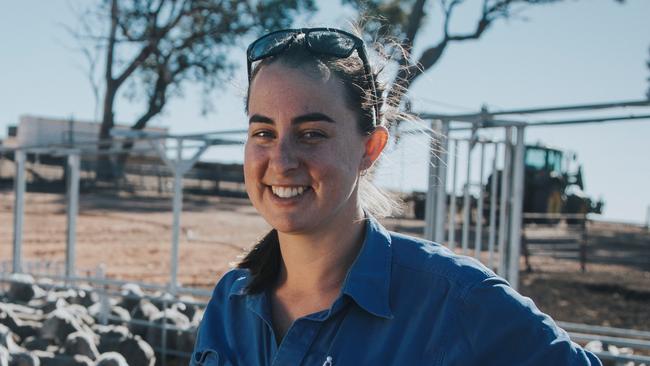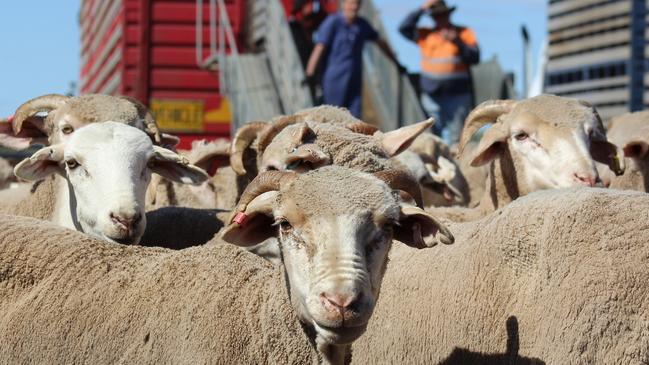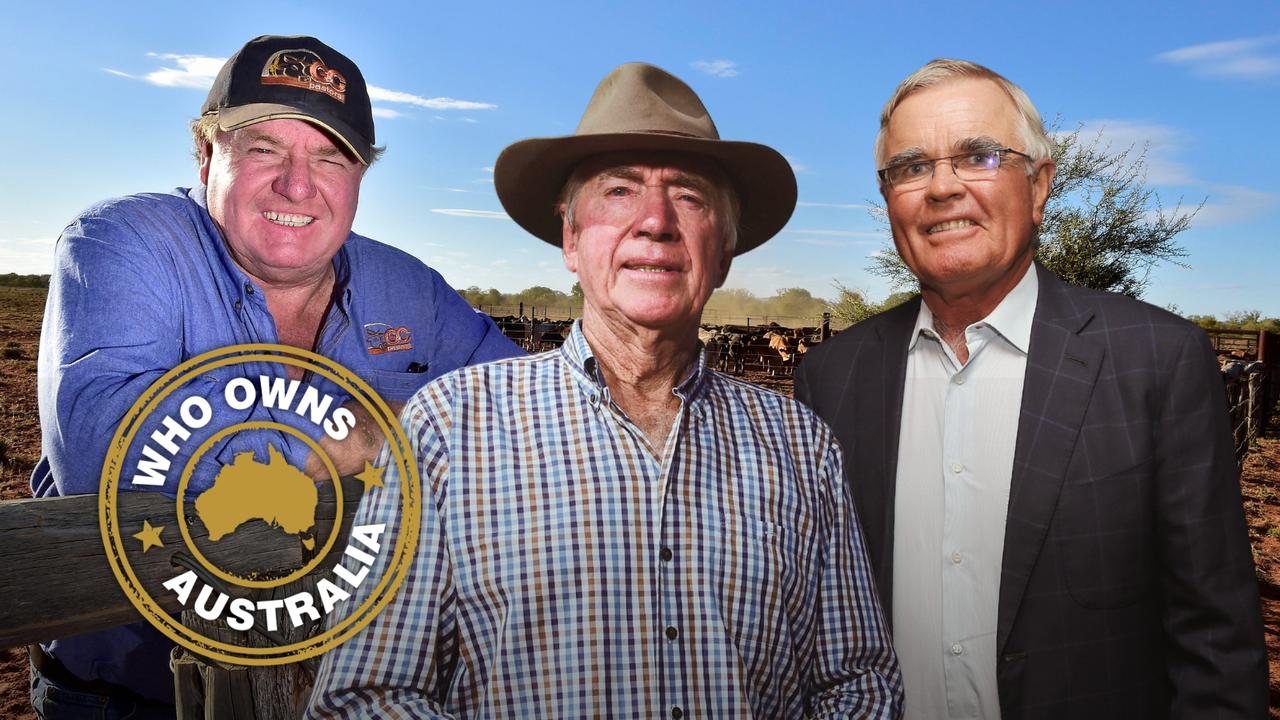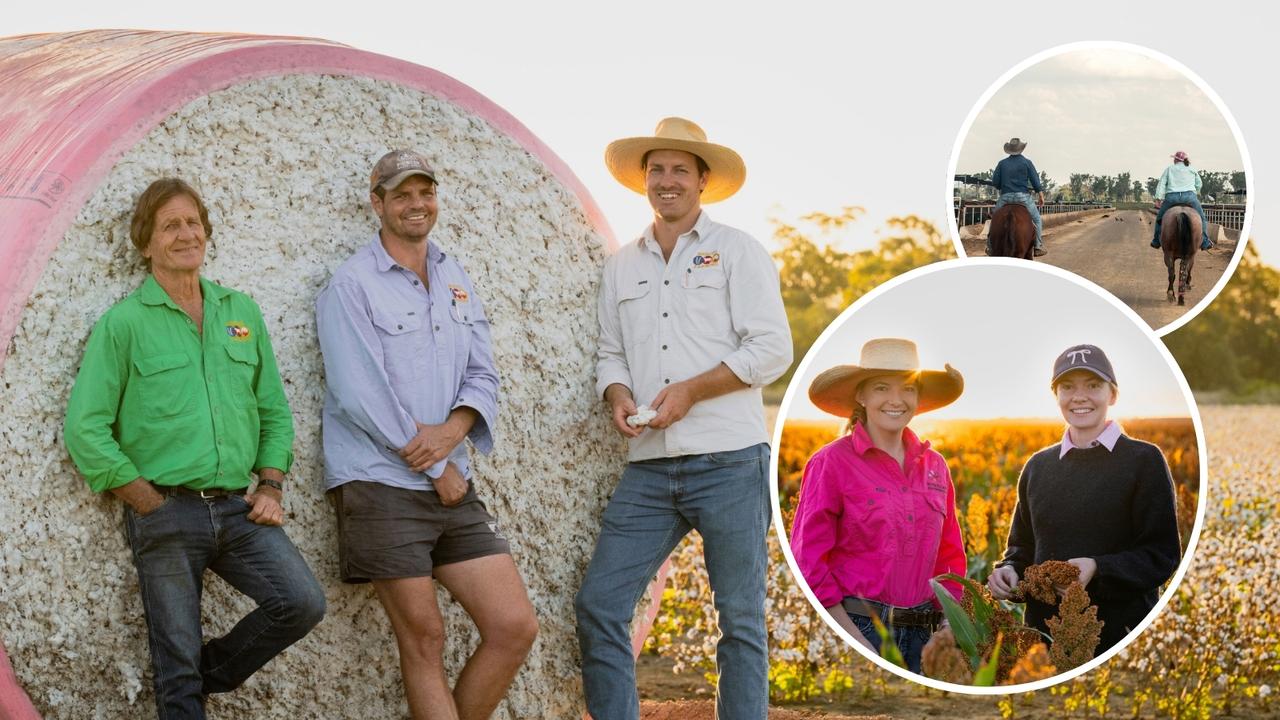Western Australian farmers ‘emotional and scared’ thanks to live sheep export uncertainty
Western Australian farmers are full of fear as the live sheep export industry blindly hurtles towards the federal government’s planned phase-out.
Fourth-generation West Australian sheep farmer Emily Stretch fears she could be the last of her kind.
By the numbers her family grazes 12,500 Merinos over 2400 hectares at Kojonup, 250km south of Perth.
She is also one of about 3000 people financially dependent on live sheep exports thrust into a state of emergency, enmeshed in federal Labor’s determination to halt the $92 million industry after taking the policy to two consecutive elections.
“If we are not able to find a profitable way to replace exports, or stop the ban, then it’s a very real possibility that large areas of our land will need to be sold,” Stretch says.
“To have a government say you are not allowed to do something anymore is confronting. Then the shock comes and then the fear and panic sets in.
“Do I sell the wethers while I can? Get out? Is there hope? When will the ban start? I am making budget decisions for the next 18 months every day, making genetic decisions for the next 10 years.
“The uncertainty creates fear and knee-jerk reactions, we are seeing normally level-headed people in town firing from the hip, they are upset, emotional and scared.

“I don’t know what will happen to our small communities. I don’t know what will happen to the mental health of all of us that look after livestock day in and out.”
Western Australia accounted for 99.2 per cent of the 502,758 live sheep exported from Australia in 2022. The trade is the cornerstone of the state’s sheep industry and embedded across the supply chain.
From trucking companies, straw producers and shearers to farmhands, stock agents and vets, it supports a vast network.
Its cash flow has also created a circular economy through the Wheatbelt and Great Southern regions, with pubs to bakeries and retail to hospitality dependent on the industry in varying degrees.
Education and health facilities, sports and social clubs and shire councils fear losing much-needed government funding if populations dwindle as expected once the ban is applied.
Labor’s position is that the industry’s animal welfare standards do not meet community expectations. The terms of reference it gave its own independent phase-out advisory panel offers the industry no future, only a “transition” out of existence.
As one farmer posted to social media, the panel “just want to know which flowers we want at our funeral”.
It’s stern stuff for communities still stinging from the 2011 live cattle export ban and still haunted by the 1990s wool industry collapse when government told farmers to cull thousands of sheep.
Communities who have watched with a sense of prescience the fallout of the Western Australia government’s shock 2021 native forest logging ban with a proposed end date of 2023.

Narrogin MP and state shadow forestry minister Steve Martin says many timber jobs and multi-generational businesses have already been lost and “the proposed industry rebuild has been a sham”.
“And that is what the livestock sector will face,” Martin says.
So what of that fate?
Martin says some farmers are implementing exit strategies, while the federal government has suggested increasing local meat processing capacity for those who stay.
But, as Sheep Producers Australia chief executive Bonnie Skinner points out, the entire sheep market could be affected, as the competition that live exports brings creates a stable price floor.
Some farmers will revert to intensive farming practices to make ends meet, others will switch to beef and ride out oversupply issues.
Emily Stretch says those who have suitable land will doubtlessly increase crop plantings, and almost certainly drive down grain prices.
Her deeper fear though is the creation of transient communities.
“If you have livestock you have to be here all the time, many who will increase cropping will move closer to Perth for things like schools and drive out to the farms,” she says.
“And then what happens to small communities like Franklin south of us? Those little spots will just disappear.”
Australian Livestock Exporters’ Council chief executive Mark Harvey-Sutton says there will be “no winners in WA out of this policy”.
“Although no one has yet given up,” he says.

In fact, 28 farm lobby groups and businesses wrote to Western Australia Premier Mark McGowan recently urging him to “take up this fight beside us”.
The letter claims the ban is “a clear acquiescence to an animal activist agenda hellbent on shutting down animal agriculture one industry at a time”.
But animal welfare is a complex issue.
The Gillard government banned live cattle exports in 2011 after vision emerged of Australian cattle being mistreated in an Indonesian abattoir. The ban was subsequently lifted with the introduction of the Exporter Supply Chain Assurance System.
Then live sheep exporting was halted after 2400 animals bound for the Middle East died of heat stress at sea in 2017.
It restarted after exporters agreed to stop transporting by sea during the northern hemisphere summer, along with reducing stocking rates and improving ventilation.
The not-for-profit Livestock Collective says while banning sheep is “the simple solution” it urged government to instead collaborate with industry to continue its reform.
Department of Agriculture data shows mortality rates have fallen from 0.8 per cent in 2016 to 0.21 per cent in 2021, while a 2021 ESCAS review found the reform agenda had “largely achieved its objectives”.
Martin believes the industry “has earned the right to survive”.
The Stretch clan placed animal welfare at the “absolute core” of its practices and stopped mulesing when it hit headlines in 2007.
“As a farmer I would never consign my animals to a live export boat unless I knew they had completely cleaned up their game,” Stretch says.
Killing the live sheep export trade is clearly a brutal business.




